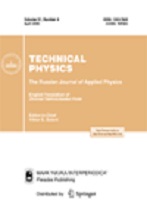|
This article is cited in 3 scientific papers (total in 3 papers)
Gases and Fluids
A sonic boom from a thin body and local heating regions of an incoming supersonic flow
A. V. Potapkin, D. Yu. Moskvichev
Khristianovich Institute of Theoretical and Applied Mechanics, Siberian Branch of the Russian Academy of Sciences, Novosibirsk
Abstract:
The problem of the sonic boom from a thin body and local heating region of an incoming supersonic flow is solved numerically. The Mach number of the incoming air flow is 2. Calculations are performed using the combined method of “phantom bodies”. The results of calculations show that local heating of the incoming flow can reduce the level of the sonic boom. The level of the sonic boom depends on the number of local heating regions in the incoming flow. For a single local heating region, the level of the sonic boom can be reduced by 20% as compared to the level of sonic boom from a body in a cold flow. On the other hand, the heating of the incoming flow in two heating regions reduces the level of the sonic boom by more than 30%.
Keywords:
supersonic flight, shock waves, sonic boom, slender body, flow heating, method of phantom bodies.
Received: 16.08.2020
Revised: 15.10.2020
Accepted: 17.10.2020
Citation:
A. V. Potapkin, D. Yu. Moskvichev, “A sonic boom from a thin body and local heating regions of an incoming supersonic flow”, Zhurnal Tekhnicheskoi Fiziki, 91:4 (2021), 558–566; Tech. Phys., 66:5 (2021), 648–657
Linking options:
https://www.mathnet.ru/eng/jtf5030 https://www.mathnet.ru/eng/jtf/v91/i4/p558
|


|





 Contact us:
Contact us: Terms of Use
Terms of Use
 Registration to the website
Registration to the website Logotypes
Logotypes








 Citation in format
Citation in format 
